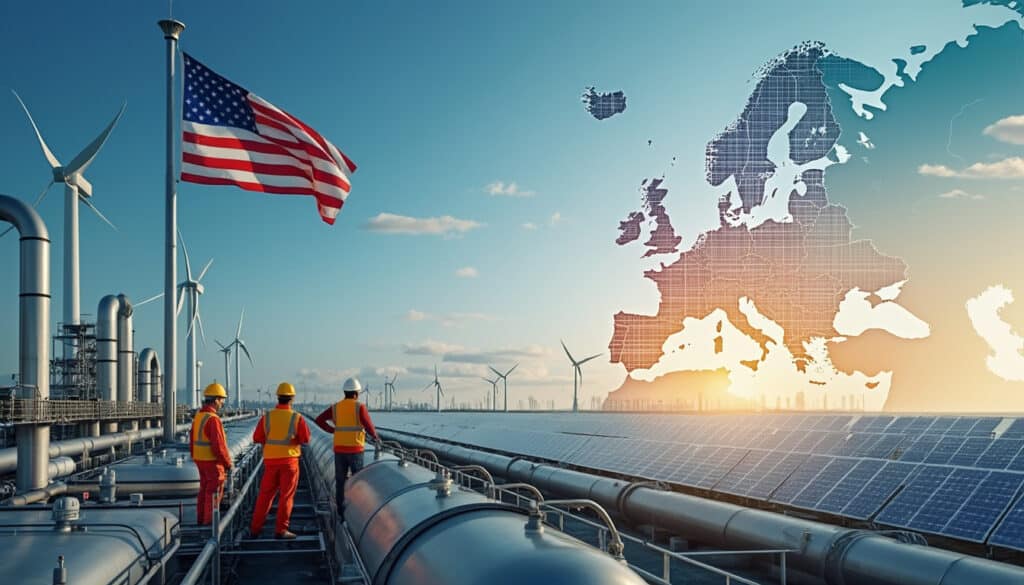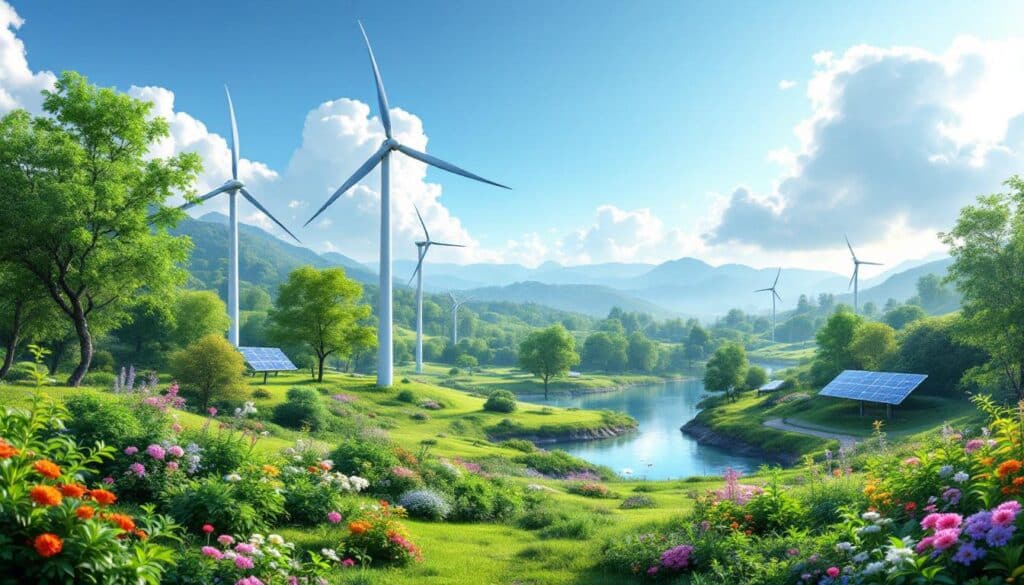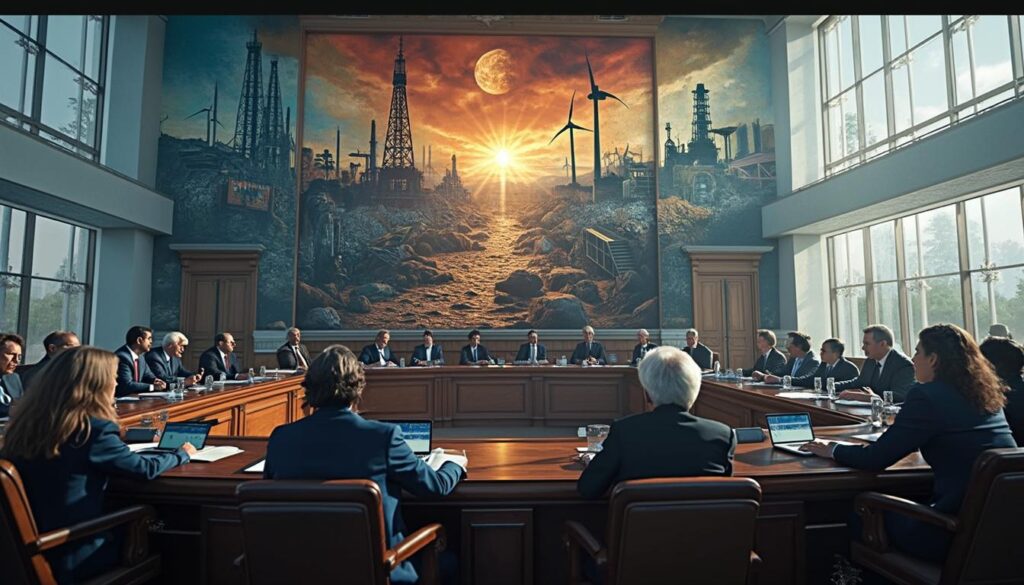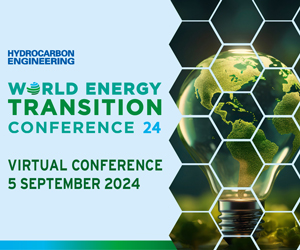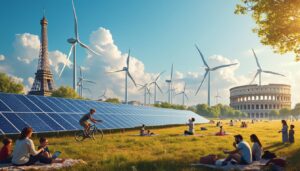With geopolitical tensions exacerbated by the conflict in Ukraine, the European Union is reevaluating its energy supply sources. Shortly after the cessation of Russian gas flows, a strategic reorientation is necessary, focused on American liquefied natural gas (LNG) and renewable energies. By signing agreements with the United States to ensure LNG imports until 2030, the EU aims to strengthen its energy security. This transition is also supported by the “REPowerEU” plan, which aims to significantly reduce dependence on Russian fossil fuels by 2027. At the same time, the emphasis is on developing more sustainable energy sources to ensure a stable and environmentally friendly energy future.

Reducing the EU’s Energy Dependence
The halt of Russian gas supply has placed the European Union in a complex position, seeking to fill this crucial energy void. In response, the EU has multiplied initiatives to diversify its energy sources. Among these actions, signing agreements with the United States for the importation of liquefied natural gas (LNG) has emerged as an immediate solution. The European market, which hesitated due to fluctuations in the Asian market, has now become dependent on American offers due to rising prices in Asia. Learn more about this strategic reorientation in the context of the EU’s energy shift.
The Environmental Impact of New LNG Infrastructures
While the choice of American LNG has several immediate advantages, particularly in terms of geopolitical segregation, it is not without criticism. The infrastructures necessary for this transition, such as new LNG terminals, present considerable environmental challenges. Indeed, the liquefaction and transportation process of this type of gas has a non-negligible carbon impact. Novethic highlights this issue in their rse/remplacer-le-gaz-russe-par-le-gnl-americain-le-pire-des-scenarios-climatiques-on-vous-explique-pourquoi-en-une-infographie-150687.html”>detailed infographic. Europe thus faces a dilemma: to respond to urgent needs while genuinely committing to the transition to more sustainable and renewable energy sources.
Renewable Alternatives: A Bet on the Future
In this quest for energy autonomy, renewable energies play a central role. Following the example of Germany, which has reached 62.7% renewable energies in its electricity mix, the goal for the entire Union is clear: to increase the share of renewable energy sources significantly to reduce dependence on fossil fuels. Initiatives like the “REPowerEU” plan aim for energy diversification through solar, wind, and even geothermal energy, thereby transforming energy challenges into sustainable opportunities. These efforts play a crucial role in reducing energy bills despite the overall increase in prices, a reality also discussed on Green Just Now.
Articles similaires
Thank you!
We will contact you soon.

